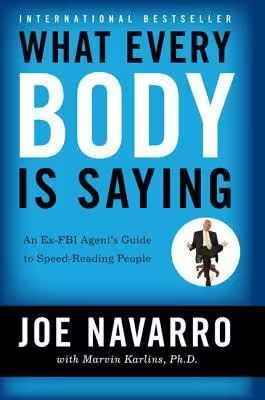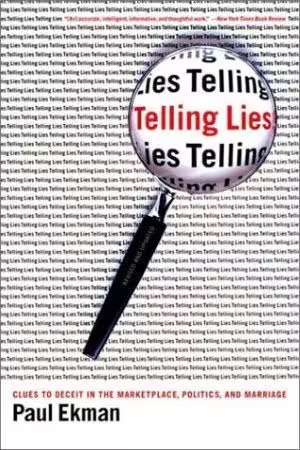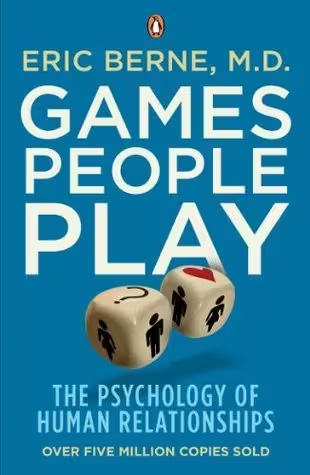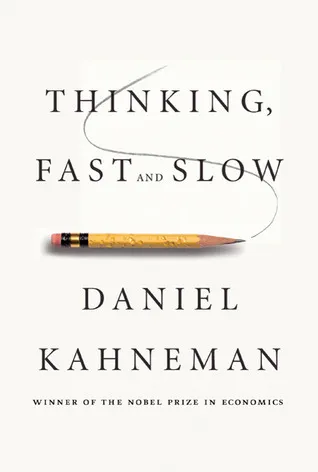If you’ve ever wished you could read anyone more accurately—spotting subtle cues, decoding hidden emotions, and understanding what really drives people—these five books have been my go-to training ground.
After working through What Every BODY Is Saying, The Definitive Book of Body Language, Telling Lies, Games People Play, and Thinking, Fast and Slow, I started noticing things I’d previously missed: the nervous foot pointing toward the door, the microexpression that betrays a “polite” lie, the quiet psychological games playing out in everyday conversations, and the cognitive biases shaping people’s decisions long before they speak.
In this guide, I’m pulling together what actually helped me in real life—from reading body language and nonverbal communication to spotting emotional leakage, manipulative social games, and fast, automatic thinking.
If you’re searching for practical, research-backed ways to understand human behavior, detect deception more reliably, and get closer to people’s true motives (without turning into a cold analyst), this breakdown of five essential psychology books will give you a clear, experience-based place to start.
Table of Contents
Why “Reading People” Is Now a Core Life Skill
If you’ve ever walked away from a conversation thinking, “Something felt off, but I can’t say why,” you’ve already brushed against the kind of skills these five books sharpen. Learning to read people—their body language, microexpressions, and psychological patterns—isn’t about becoming a human lie detector or a manipulative mind reader. It’s about seeing what’s already there: subtle cues, emotional tells, and recurring “games” that reveal deeper motives.
The books below cover three crucial layers of how to read anyone:
- What the body broadcasts (Navarro, Pease)
- How deception leaks through voice, face, and story (Ekman)
- How hidden scripts and cognitive biases drive behavior (Berne, Kahneman)
Together, they give you a practical toolkit for decoding people—from casual small talk to high-stakes negotiations—without turning you into a cold profiler. You’ll get concrete ways to notice nonverbal cues, spot incongruence, and understand the mental shortcuts behind everyday choices.
From Body Language to Deep Motives
Most advice on “how to read anyone” gets stuck at simple gestures: crossed arms, lack of eye contact, a fake smile. The research and frameworks behind these five books go much deeper:
- Joe Navarro explains how our limbic system—the brain’s survival center—drives involuntary body language, especially in the feet, torso, and hands.
- Allan and Barbara Pease show that body language works in clusters and context, not isolated gestures, and that culture, status, and gender all shape how people sit, stand, and gesture.
- Paul Ekman documents how leakage—tiny slips in face, voice, and body—betrays concealed emotions, including lies.
- Eric Berne reveals the “games people play”: repeating patterns of interaction driven by our Parent, Adult, and Child ego states.
- Daniel Kahneman maps how System 1 (fast) and System 2 (slow) thinking shape judgment, and how biases and mental shortcuts can make people (including us) act against their own stated intentions.
Seen together, you’re not just “reading body language”—you’re reading nervous systems, social scripts, and thinking styles. That’s what lets you move from superficial cues to deeper motives.
1. What Every BODY Is Saying by Joe Navarro
Brief Summary

Joe Navarro, a former FBI counterintelligence agent, treats the human body as a constantly broadcasting signal system. In What Every BODY Is Saying, he lays out a region-by-region tour: feet and legs, torso, arms, hands, and face, plus a chapter on detecting deception.
The heart of the book is “limbic legacy”—the idea that our survival brain reacts first, long before we have time to edit or fake our reactions. Under stress, our bodies literally retreat: shoulders hunch, torsos shield vital organs, feet orient toward the exit, hands pacify the neck or face.
Navarro is careful about overclaiming. He teaches you to establish a baseline, track sudden changes, and read clusters of cues, not single gestures in isolation. You learn why feet are often more honest than faces, how territorial displays show confidence, and how self-touch can reveal anxiety or discomfort.
Instead of promising “mind reading,” the book gives you a disciplined way to watch comfort vs. discomfort—a simple but powerful distinction that works in interviews, negotiations, dating, and everyday conversations.
Core Premise
If you focus on comfort/discomfort signals driven by the limbic system and look for patterns over time rather than single gestures, you can dramatically improve how accurately you read people’s emotions, intentions, and hidden stress.
Top Takeaways & Lessons
- Start from the feet up. Feet and legs are less consciously controlled and reveal escape impulses, interest, or withdrawal early.
- Baseline first. Compare any “odd” behavior to how the person normally sits, talks, and moves in neutral situations.
- Comfort vs. discomfort is the master filter. Forget “good vs. bad”; ask, “Did this cue show greater comfort or discomfort just now?”
- Pacifying behaviors matter. Neck rubbing, face stroking, lip biting, and self-hugging often signal rising stress or inner conflict.
- The torso tells the truth. Leaning in, ventral fronting, or protecting the torso are strong indicators of engagement or threat.
- Deception is about clusters and timing, not single “tells.” Navarro repeatedly warns against labeling any one cue as “the lie signal.”
2. The Definitive Book of Body Language by Allan & Barbara Pease
Brief Summary

Allan and Barbara Pease take a broader, often more playful tour through the world of body language. They draw from decades of observation, sales work, and research to explain how posture, gestures, personal space, and cultural norms shape everyday communication.
The book covers everything from handshakes and mirroring to flirting signals, status displays, and how body language operates in business, politics, and relationships.
Rather than treating one gesture as a magic key, the Peases hammer home the importance of clusters, congruence, and context: you read people by combining multiple signals and comparing them to their words and environment.
The writing leans heavily on case examples and photos, which make it easy to visualise the difference between open and closed, dominant and submissive, or interested and bored body language.
The tone is practical and slightly cheeky. You get usable tips for interviews, negotiations, public speaking, and dating, but also repeated reminders not to ignore personality or culture. The result is a general-purpose manual for reading people that pairs nicely with Navarro’s more limbic-focused approach.
Core Premise
Body language is a learned yet deeply habitual “second language”. If you learn to read gesture clusters within context—and account for cultural and gender differences—you can decode attitudes and intentions far more accurately than by listening to words alone.
Top Takeaways & Lessons
- Clusters > single cues. A single crossed arm means little; crossed arms plus a tight jaw, minimal nodding, and turned-away feet strongly signals resistance.
- Congruence is key. When words and body language clash, the body is more likely to be honest.
- Territory and space reveal power. Who takes more room, controls seating, or positions themselves at the head of the table often has higher status.
- Gender and culture shape nonverbal “rules.” Don’t apply one culture’s norms blindly to another.
- Mirroring builds rapport. Subtle matching of posture and tempo (without mimicking) can accelerate trust.
- Charisma is often nonverbal. Open posture, genuine smiles, and expansive gestures create an instant impression of confidence and warmth.
3. Telling Lies by Paul Ekman
Brief Summary

Paul Ekman is one of the most cited researchers on emotions and facial expressions, and Telling Lies is his deep dive into how deception works—and why detecting lies is so hard. The book moves from basic definitions of lying and “leakage” through voice, words, face, and body, to polygraphs, law-enforcement applications, and lies in public life.
Ekman shows that people leak hidden emotions through microexpressions, brief facial movements that flash before we can control them, and through changes in voice, speech rate, and body movements. But he also emphasizes how often even professionals—judges, police, intelligence officers—do no better than chance at detecting lies in experimental settings.
The book blends lab research with high-profile case studies, from political scandals to everyday marital conflicts. It also wrestles with the ethics of lie detection and the dangers of overconfidence: misreading someone as deceptive can be as harmful as missing a lie. Rather than giving you a cheap “lie hack,” Ekman leaves you with a more nuanced, cautious, and evidence-based way to approach deception.
Core Premise
Lies leave involuntary traces, but there is no infallible lie detector. With careful attention to emotional leakage in the face, voice, and body—and an understanding of context—you can improve your odds of spotting deceit, while staying humble about your accuracy.
Top Takeaways & Lessons
- Different lies, different risks. Lies about current, high-emotion events leak more than distant, low-stakes ones.
- Look for emotional mismatch. Does the emotion in the face, voice, and words fit the story and timing?
- Microexpressions are brief but telling. A flash of fear, anger, or contempt can contradict a calm narrative.
- Baseline again matters. Compare a person’s “lying” behavior to how they normally speak and move.
- Experts are not magic. Police, judges, and even therapists often perform no better than the public at formal lie-detection tasks.
- Ethics first. Treat lie-reading as probabilistic. Avoid accusations based solely on “tells”; use them as prompts for better questions.
4. Games People Play: The Psychology of Human Relationships by Eric Berne
Brief Summary

If Navarro and Ekman help you read what bodies and faces are doing, Eric Berne helps you read what people are really doing with their relationships. Games People Play introduces Transactional Analysis (TA), which models personality as three ego states: Parent, Adult, and Child.
Berne defines a transaction as a unit of social interaction—stimulus and response—and shows how everyday conversations are often structured as games: recurring patterns with hidden motives, rules, roles, and payoffs. The book’s famous “thesaurus of games” includes patterns like “Why Don’t You—Yes But,” “If It Weren’t for You,” and “Now I’ve Got You, You Son of a Bitch.”
Games sit between pastimes and intimacy: they’re more emotionally charged than small talk but safer than true openness. Berne explains how families, couples, workplaces, and social circles organize themselves around shared games, often passed down through generations.
Reading this book gives you a new lens: instead of taking drama at face value, you start asking, “What game is being played here, what roles are we in, and what’s the hidden payoff?”
Core Premise
Much of social life consists of repetitive psychological games—structured interactions with covert motives and predictable payoffs—played out between our Parent, Adult, and Child ego states. If you can name the game, you can choose to stop playing or switch to more authentic, adult-to-adult communication.
Top Takeaways & Lessons
- Ego states: Parent, Adult, Child. These are patterns of feeling and behavior, not literal “parts,” and each has its place.
- Complementary vs. crossed transactions. Conversations flow when ego states line up (Adult–Adult, Child–Parent); they break down when they cross.
- Games have payoffs. Even painful patterns offer psychological or social advantages (e.g., avoiding intimacy, proving a belief, gaining sympathy).
- Games are learned and inherited. Families and cultures transmit preferred games over generations.
- Game-free relationships aim at intimacy. The more you can stay in Adult-to-Adult transactions, the less you need manipulative scripts.
5. Thinking, Fast and Slow by Daniel Kahneman
Brief Summary

Daniel Kahneman’s Thinking, Fast and Slow doesn’t look like a classic “read anyone” book at first glance, but it quietly underpins all the others. Kahneman introduces System 1 (fast, intuitive, automatic) and System 2 (slow, deliberate, effortful) as a way to describe how we make judgments and decisions.
System 1 is constantly generating impressions, stories, and quick answers. It’s efficient but prone to heuristics and biases: the availability heuristic, anchoring, halo effects, loss aversion, overconfidence, and more. System 2 can correct these, but it’s lazy—it often rubber-stamps System 1’s first take.
The book walks through decades of experiments (many with Amos Tversky) showing how people systematically misjudge probabilities, risks, and future outcomes. You see why smart people fall for bad investments, make overconfident predictions, and cling to stories that feel coherent rather than statistically sound.
For reading people, the key insight is this: much of what you see is System 1 in action—jumping to conclusions, relying on stereotypes, and rewriting memories to fit tidy narratives. Understanding that helps you decode not only others’ choices but also your own blind spots.
Core Premise
Human judgment is driven by two interacting systems. System 1 delivers fast, intuitive answers and compelling stories; System 2 provides slower, more logical oversight but is often disengaged. Our predictable biases come from over-relying on System 1 and under-using System 2.
Top Takeaways & Lessons
- Heuristics substitute easy questions for hard ones. “Should I invest?” becomes “Do I like this brand?” without our noticing.
- We’re bad at statistics. System 1 prefers vivid stories and single examples over base rates and large-number logic.
- Overconfidence and hindsight illusions. We underestimate uncertainty and overestimate how much we “saw it coming.”
- Cognitive minefields need slow thinking. Recognize situations prone to bias (high stakes, ambiguity, strong emotion) and deliberately engage System 2.
- Use this lens on yourself first. It’s easier—and safer—to spot biases in our own judgments before diagnosing others.
How These 5 Books Work Together to Help You “Read Anyone”
- Navarro + Pease train your eyes: you see nonverbal cues, body language clusters, and physical signs of comfort, threat, or attraction in real time.
- Ekman adds a layer of emotional granularity and ethical caution to how you interpret microexpressions and signs of deceit.
- Berne lets you zoom out to relational patterns, seeing arguments and dramas as repeatable games rather than random chaos.
- Kahneman explains the cognitive machinery underneath everyone’s choices—including your interpretations of their behavior.
Used together, they turn “reading people” into a disciplined practice:
- Observe: posture, gestures, facial expressions, verbal content.
- Contextualize: situation, culture, relationship history, emotional stakes.
- Pattern-match: is this a known game, bias, or limbic survival response?
- Hypothesise, don’t accuse: treat your read as a working hypothesis, open to revision.
Conclusion
The real payoff of learning to “read anyone” isn’t winning negotiations or catching liars—though these books absolutely sharpen both. The deeper value is that you become more observant, less naive, and more compassionate at the same time.
When you understand how a nervous system defends itself (Navarro), how culture scripts our gestures (Pease), how emotions leak through despite our best efforts (Ekman), how old games repeat in new relationships (Berne), and how minds lean on shortcuts and stories (Kahneman), it becomes harder to take everything personally. You start to see reactions as signals, not verdicts.
If you work through these five books with curiosity and keep testing their ideas in daily life, you’ll find yourself catching subtle cues sooner, spotting unhealthy dynamics faster, and giving both others and yourself a bit more room to be imperfect humans running very old code. That’s the kind of “reading people” skill that actually lasts.
